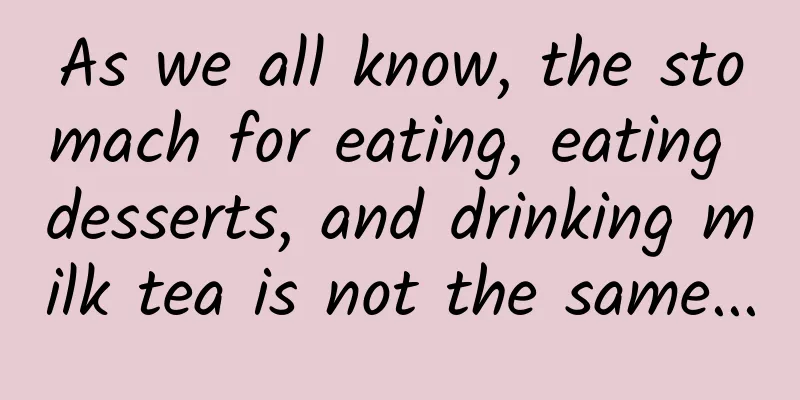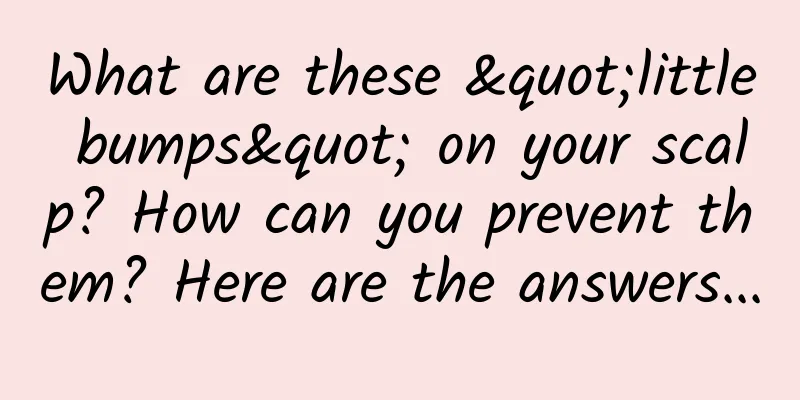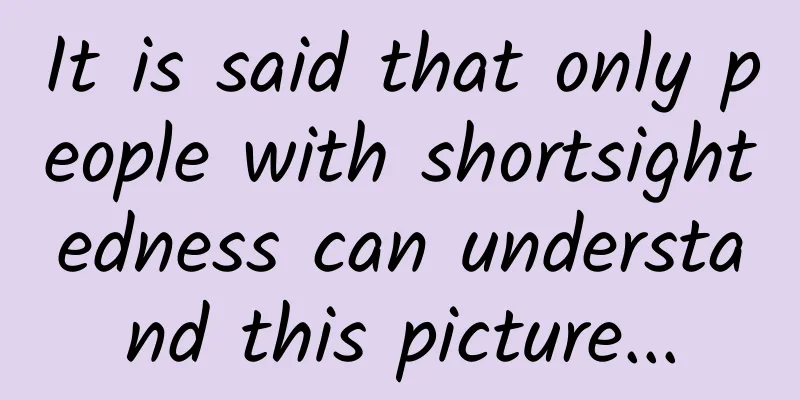As we all know, the stomach for eating, eating desserts, and drinking milk tea is not the same...

|
A piece of pizza is freshly out of the oven, the fluffy dough is baked by wood fire, and the sweet smell of cheese and vanilla hits your nose. When your saliva is about to flow, pick up a piece of steaming pizza, take a bite, feel the dense texture of the cheese, the crispy crust, a thin layer of tomato sauce, emmmmmm, the taste of mozzarella cheese and various ingredients collides with your taste buds, it is really happiness. Take a bite of the cheese, stretch it, watch the cheese get longer and longer, then pull it apart and bite it bite by bite, how delicious! Then comes the second bite, the third, and after you wolf down the first piece, you pick up the next one, which is still delicious. Then the third piece, the fourth piece... Your enthusiasm gradually wanes until you don't want to eat anymore, and you may even leave half of the food. You burped one after another, leaning back, your belly rising from behind the table like the morning sun. "Ouch!" You patted your stomach and cried, "I'm so full, I can't eat another bite!" "Are you sure?" I asked jokingly. "Would you like some dessert?" "Dessert?" Your eyes widen again, you cough lightly, and then grin: "Well, you can still have some dessert!" In fact, when I bring out the rich and delicious chocolate cake, you can finish it quickly. But how is that possible? How can you eat cake when you are full? Do you have a special dessert stomach that allows you to eat dessert when you are full? It turns out that there is indeed an article in a medical journal that proves the existence of this "dessert stomach". But please note that "dessert stomach" is just a joke by scientists. In fact, "dessert stomach" does not exist. The reason why you can always eat desserts must have another explanation. (Copyrighted image from the gallery, no permission to reprint) What is satiety? How do you know when you are full? It is certainly not because the food piles up so high in your body that it fills up down your throat. There must be some other mechanism. This mechanism may be in your brain, because the brain controls almost all bodily functions. It is indeed the case that you do have a satiety meter in your brain. The real sensor of satiety, the organ that's full of blood and soft, is part of your brain. Specifically, it's located in the hypothalamus part of your brain, which, among other functions, acts as a control center for hunger. (Copyrighted image from the gallery, no permission to reprint) As you devour your pizza, the food moves through your mouth, down your esophagus, and eventually into your stomach. As you eat more and more, the pizza paste begins to fill your stomach, which expands and is then detected by stretch receptors around it. The stretch receptors then send signals via the vagus nerve to the hypothalamus. When the signals reach the hypothalamus, they move the needle on the satiety meter: If you keep eating, the needle on the satiety meter will continue to move. Eventually, if you let yourself stretch your receptors, your stomach will fill up with food and scream, "Stop, for God's sake! Stop eating! You're full! Your stomach is about to explode! There's no room for anything else!" If you're this full, you literally can't eat anything anymore. You won't eat dessert because you literally have no room in your stomach! Yet, as you and I both know, you usually still manage to eat dessert. The reason is simple: you stop eating before the needle on your satiety meter hits the maximum. This is because in addition to general satiety, your brain has a whole set of additional meters that measure sensory-specific satiety. So what is sensory-specific satiety? Food has sensory properties: sweet, salty, crunchy, oily, slippery, spicy, chewy, tender, sour, hot, cold, greasy, juicy, crispy, crunchy, etc. For each of these sensory properties, you have a specific satiety meter. That is, your brain not only keeps track of how full your stomach is, but also measures how much greasy food you ate, how much salty food you ate, how much sweet food you ate, and so on: So, when you feel full after eating pizza, it's usually not because you actually ate a lot. Instead, it's because the specific sensory satiety meter in your brain is telling you that you've had enough (F) of greasy and salty food (or some other pizza-specific sensation): In other words, you stopped eating pizza because your brain got tired of foods with pizza-like properties. However, if you suddenly see a completely different food, like chocolate cake, whose sensory properties have nothing to do with pizza, your appetite will suddenly return. After all, the needle on your sweetness meter is still "E" and you actually have a little room in your stomach: So you reach for that cake, taste a spoonful, then another, and another, until your sensory satiety meter tells you “Okay, you little cake lover, that’s enough of the sweet, chocolatey goodness. (Copyrighted image from the gallery, no permission to reprint) Relaxed stomach allows you to eat more In addition to the sensory feeling of fullness, there is an additional reason behind the incredible behavior of just finishing six slices of pizza and still being able to eat a piece of cake: your stomach actually makes room for more food. The stomach is made up of muscle walls, and when your brain expects new food, it sends a command to your stomach to relax. Your stomach, upon receiving this command, relaxes and expands like a bighead carp surfacing from the deep sea, and it actually increases in volume to accommodate more food. So, while you secretly loosen your belt, your stomach quietly does the same thing. (Copyrighted image from the gallery, no permission to reprint) Sensory-specific satiety triggers overeating Unlike pandas, humans don't survive on just one type of food. We're omnivores, and if we gnawed bamboo all day and didn't eat anything else, we'd die. We need a varied diet to keep all the nutrients we need to stay healthy. So it makes sense that we descended from cavemen who evolved a sense-specific satiety. I mean, those cavemen who ate just one type of food probably died of malnutrition, while the people with a sense-specific satiety sense thrived and gave us our descendants. In fact, sensory-specific satiety is so important to us that it is completely subconscious. We know this because it can be demonstrated even in people who suffer from amnesia and cannot remember what their last meal was—or if they have eaten at all. Give the amnesic people as many sandwiches as they want, then offer them a second meal after they have forgotten what they just ate. They don’t remember what they ate at the first meal, but if they eat the sandwich again, they will eat much less than other sensory things, such as cookies, cake, or yogurt. Subconsciously, a specific satiety signal should seem to protect us from eating too much of the same type of food. However, this isn’t always the case. It turns out that our brains can be easily fooled. In another experiment, researchers had test subjects eat Smarties of the same color—let’s say red. Then, shortly after, they gave them more Smarties. Of course, the taste, texture, and smell were the same, but oddly, when it came to the second serving of Smarties, the test subjects ate more of the other colors than the red ones. Their sensory-specific satiety meter was fooled by artificial food coloring. The reason is obvious: it’s not easy for the same food to have different colors in nature. Our ancestors walking through the savannah and stumbling upon a Christmas tree wouldn’t have had fruit with as many different colors as a box of crayons. So our brains assume that if something comes in different colors, it will also have different nutritional values. So when we see rainbow-colored Smarties, Skittles, donuts, and plates full of ice cream, we feel hungrier than we actually are. Our brains see all this and say, “Oh, better stay hungry so we can get the nutrients from each color!” But synthetic colors are far from the only factor in modern foods that contribute to our tendency to overeat. Unlike our ancestors who could only eat what was in season or preserved, we can eat whatever we want at any time of the year. So we are less likely to get bored with food, and therefore we tend to eat more. Even worse, industrial junk food is specifically engineered to be as stimulating to our taste buds as possible, with a variety of textures, flavors, and colors. (Copyrighted image from the gallery, no permission to reprint) Think about it. An apple has no butter core, a banana has no crispy skin, and a raw cucumber has no salt and umami. But what about industrial junk food? It's drenched in salt, sugar, fat, and MSG, and the food itself is as colorful as the plastic packaging that wraps it. When you pop it into your mouth, you experience a taste explosion of crunchy, silky, chewy, and soft textures, and a variety of flavors - all in one food experience. Because of this diversity, sensory-specific satiety takes longer to kick in, and we eat more as a result. Can sensory-specific satiety help you eat less? How much you can eat depends largely on how quickly your brain gets bored of the food in front of you. Given this, is there a way to ensure your brain gets bored faster so that you don't eat as much? Well, yes there is! To ensure your sensory-specific satiety signals come on faster, here are some suggestions. First, avoid buffets. There is so much variety in buffets that you'll eat more than you normally would, even if your goal isn't to bankrupt the restaurant owner. Secondly, don't use sauces and other condiments. Or at least, stick to one condiment or sauce. Because if you serve a plate of french fries with ketchup and then a plate of french fries with mayonnaise, you're going to eat more than if you only serve them with ketchup or mayonnaise. Third, eat in small bites. Put away your big spoon and eat with a teaspoon or chopsticks. As studies have shown, both bite size and sip size affect your feeling of fullness, with smaller bites or sips making you feel full while taking in very little food. This is so because sensory-specific satiety does not measure how much of a specific food enters your stomach, but rather how many bites you take. Finally, eat slowly and don't gulp down your food. This prolongs your oral exposure to the food you eat, and you won't eat as much because you're bored. Also, by eating slowly, you allow other mechanisms to take effect that prevent further filling up your stomach, such as additional intestinal stretch receptors and a flood of chemical signals from the gut. ending Why do you always have room for dessert? The answer is simple. It’s because after a full main meal, you can actually still eat, but your brain is already tired of the main meal. But if a plate of something completely different comes along—something with a different texture, color, flavor, and shape—your appetite returns immediately. Your brain figures that the dessert is different and must contain some important nutrients you haven’t had yet. So, to ensure your survival, it says, “Better not risk malnutrition and get this brownie in our bellies!” By David B. Clear Translation: Nuor Reviewer: zhenni Original link: https://medium.com/i-wanna-know/why-you-always-have-room-for-dessert-965f2c98f430 Source: Institute of Physics, Chinese Academy of Sciences |
<<: Most animals cannot recognize themselves in the mirror, so why can humans?
>>: The Everest we climbed together in those years
Recommend
Turquoise-colored emerald kudzu blooms and competes with bird of paradise flowers
South China Botanical Garden is full of spring in...
How to distinguish between Douyin information flow delivery and Douyin+?
According to official statistics, the official da...
Summary of unknown black hat SEO techniques
For website optimization SEO personnel, it is not...
When will the long-awaited nuclear fusion light up the world?
Nuclear fusion energy is known as the cleanest en...
91 Ten Articles - New Energy Vehicle Industry Briefing: Volkswagen's Pure Electric Vehicle Sales May Surpass Tesla's Next Year
1. The electrification of American cars is accele...
Shocking! A female student from Shanghai International Studies University was thrown a "foreign object"! Multiple platforms urgently removed the app... What on earth is this?
Expert of this article: Liu Zhijun, Pharmacy Depa...
The popular information flow advertising, how does it work?
Information feed ads first appeared on Facebook i...
Feng Qingyang's "Stock Market Practice" Stock Trading Training Lecture No. 2
Training course content: Maybe you spent a lot of...
Foshan tutoring WeChat mini program function, how much does it cost to develop a tutoring appointment mini program?
With the increasingly fierce competition, more and...
Google releases second Android 13 developer preview to improve notification push permission settings
In recent months, the development of Android 13 h...
Attention! These 6 foods are highly toxic. Don’t keep them, let alone eat them! Throw them away immediately!
In life, many foods are delicious when they are n...
How to move forward on the road to subverting the education industry under the comprehensive impact of STEAM and Makeblock?
In May this year, at the Google IO 2016 Developer...
Google reveals three major security features of Android 5.0
[[121767]] A sweet lollipop wrapped in a tough Ke...
A must have! 18 hot spot tracking tools for marketing and promotion operators!
"Chasing hot topics" is a common practi...
Domestic products do not need Xiaohongshu-style marketing
Xiaohongshu has started to take the black-and-red...


![How to build a massive engine advertising account [Practical operation]](/upload/images/67cc013712806.webp)






